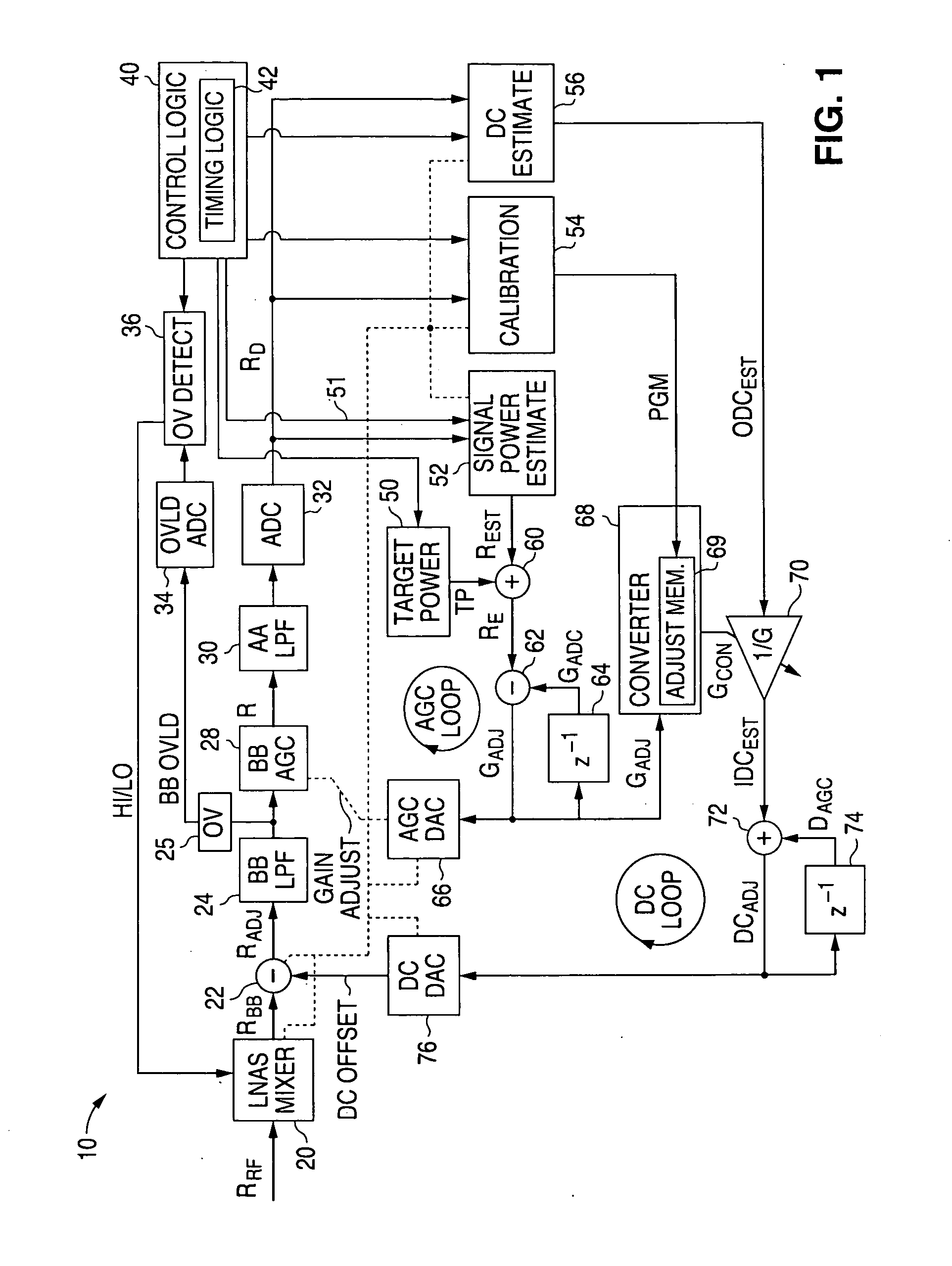Modulated if receiver and method
a receiver and module technology, applied in the field of radio receivers, can solve the problems of increasing the cost of the receiver chip, increasing the chip area required, and unwanted direct current (dc) signal levels at the output of the mixer, so as to reduce modulation, reduce modulation, and reduce the effect of modulation
- Summary
- Abstract
- Description
- Claims
- Application Information
AI Technical Summary
Benefits of technology
Problems solved by technology
Method used
Image
Examples
Embodiment Construction
[0030]In order to achieve low cost integration, the present invention obtains a satisfactory solution by filtering out the DC signal components using simple DC filters, but with reduced low frequency signal loss compared to conventional DC filter solutions. In the present approach, two servo loops and two DACs may be excluded from the receiver circuit as compared to conventional receiver solutions. In the receiver embodiments discussed below, a Local Oscillator (LO) modulation technique is employed to reduce the low frequency signal loss caused by DC filtering.
[0031]To reduce reciprocal mixing, LO signals are traditionally optimized to have low phase noise or low jitter. In the present receiver embodiments, the LO signal is intentionally modulated, e.g. by frequency or phase modulation, across the receiver bandwidth characteristic. Modulation of the Local Oscillator signal will modulate the IF frequency such that the null in the IF pass-band caused by DC filtering (to remove the DC ...
PUM
 Login to View More
Login to View More Abstract
Description
Claims
Application Information
 Login to View More
Login to View More - R&D
- Intellectual Property
- Life Sciences
- Materials
- Tech Scout
- Unparalleled Data Quality
- Higher Quality Content
- 60% Fewer Hallucinations
Browse by: Latest US Patents, China's latest patents, Technical Efficacy Thesaurus, Application Domain, Technology Topic, Popular Technical Reports.
© 2025 PatSnap. All rights reserved.Legal|Privacy policy|Modern Slavery Act Transparency Statement|Sitemap|About US| Contact US: help@patsnap.com



